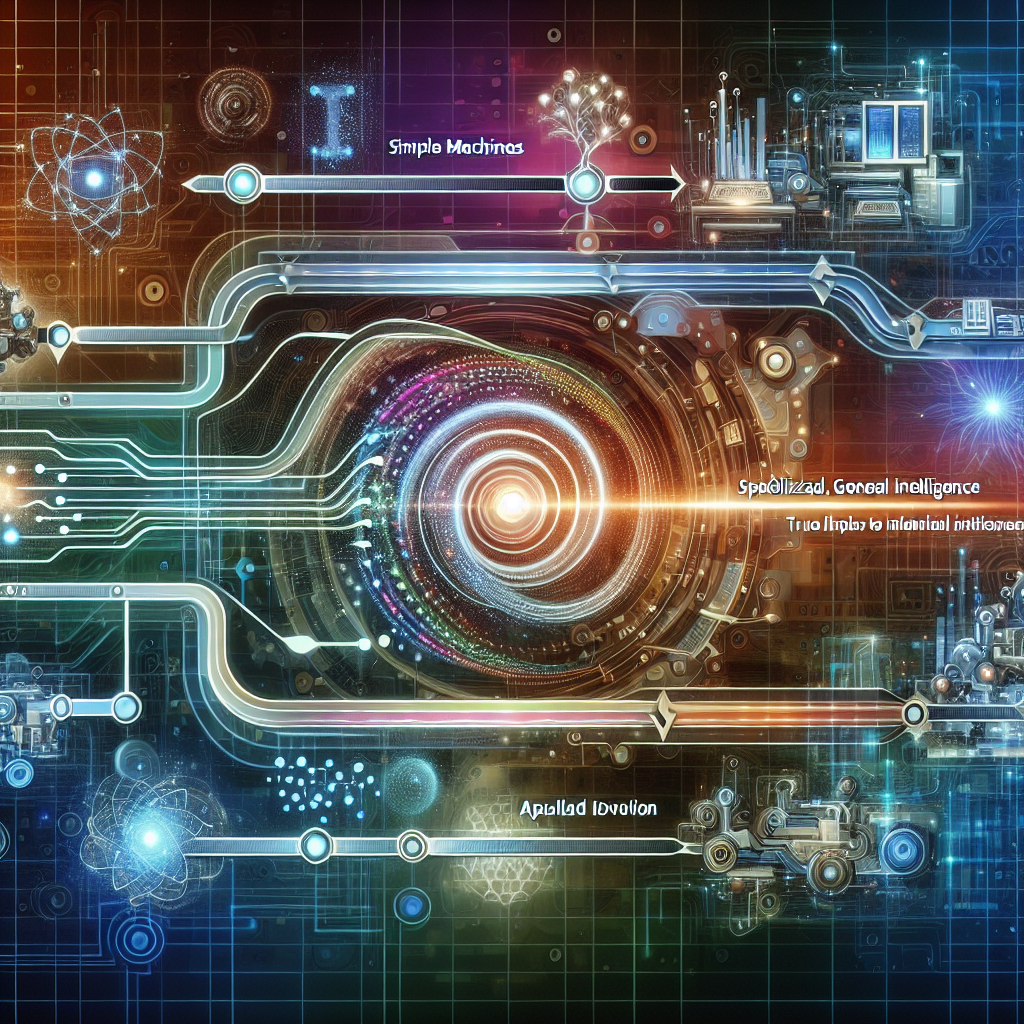Experts Predict Timeline for Achieving True AGI
Artificial General Intelligence (AGI) is the holy grail of artificial intelligence research. AGI refers to a machine intelligence that is as smart as a human across a wide range of tasks and can perform at human levels or beyond in terms of cognitive abilities. While current AI technologies have made significant advancements in narrow tasks such as image recognition, speech recognition, and natural language processing, achieving true AGI remains a distant goal.
Experts in the field of AI have been working tirelessly to predict when AGI will become a reality. While opinions vary widely, there is a general consensus that AGI will be achieved within the next few decades. In this article, we will explore the current state of AI research, the challenges that need to be overcome to achieve AGI, and the predictions made by experts regarding the timeline for achieving true AGI.
The Current State of AI Research
Artificial intelligence has made significant strides in recent years, with breakthroughs in machine learning, deep learning, and neural networks. These technologies have enabled AI systems to perform tasks that were once thought to be the exclusive domain of humans, such as playing complex games like chess and Go, driving cars autonomously, and recognizing objects in images.
However, despite these advancements, current AI systems are still far from achieving true AGI. While they excel at narrow tasks within specific domains, they lack the general intelligence and flexibility of human cognition. For example, a machine learning model that is trained to recognize cats in images cannot easily transfer that knowledge to other tasks, such as understanding natural language or reasoning about abstract concepts.
Challenges to Achieving AGI
Achieving true AGI poses several challenges that need to be addressed by researchers in the field of AI. Some of the key challenges include:
1. Building a scalable and efficient learning system: One of the fundamental requirements for AGI is the ability to learn from a wide range of data sources and generalize that knowledge to new tasks. Current AI systems often require large amounts of labeled data to learn new tasks, and they struggle to transfer that knowledge to unseen data. Developing a learning system that is capable of efficient and scalable learning is crucial for achieving AGI.
2. Understanding human cognition: Human intelligence is a complex and multifaceted phenomenon that is still not fully understood by scientists. Mimicking the cognitive processes of the human brain in an AI system is a daunting task that requires a deep understanding of neuroscience, psychology, and cognitive science. Researchers need to develop models that can capture the richness and flexibility of human cognition to achieve true AGI.
3. Ensuring safety and ethics: As AI systems become more powerful and autonomous, concerns about their impact on society and the potential for misuse become more pressing. Ensuring the safety and ethical behavior of AGI systems is crucial to prevent unintended consequences and ensure that they are aligned with human values and goals.
Predictions for Achieving AGI
Despite the challenges that need to be overcome, experts in the field of AI are optimistic about the prospects for achieving true AGI in the near future. While opinions vary on the exact timeline for achieving AGI, there is a general consensus that it will happen within the next few decades.
Some experts predict that AGI could be achieved within the next 10 to 20 years, driven by advancements in deep learning, reinforcement learning, and other AI technologies. Others are more conservative in their estimates, suggesting that it could take 30 to 50 years or more to achieve true AGI. The timeline for achieving AGI depends on a variety of factors, including the pace of technological progress, the availability of funding and resources, and the level of collaboration among researchers in the field.
FAQs about Achieving True AGI
Q: What is the difference between narrow AI and AGI?
A: Narrow AI refers to AI systems that are designed to perform specific tasks within a limited domain, such as image recognition, speech recognition, or playing games. AGI, on the other hand, refers to a machine intelligence that is as smart as a human across a wide range of tasks and can perform at human levels or beyond in terms of cognitive abilities.
Q: What are the key challenges to achieving AGI?
A: Some of the key challenges to achieving AGI include building a scalable and efficient learning system, understanding human cognition, and ensuring safety and ethics in AI systems.
Q: When will AGI be achieved?
A: While experts predict that AGI could be achieved within the next few decades, the exact timeline is uncertain and depends on a variety of factors.
Q: What are the potential risks of AGI?
A: AGI has the potential to bring about significant benefits to society, but it also poses risks such as job displacement, ethical concerns, and the potential for misuse. Ensuring the safety and ethical behavior of AGI systems is crucial to mitigate these risks.
Conclusion
Achieving true AGI is a monumental challenge that requires the collaboration of researchers from a wide range of disciplines, including computer science, neuroscience, psychology, and ethics. While the timeline for achieving AGI remains uncertain, experts in the field of AI are optimistic about the prospects for developing a machine intelligence that is as smart as a human across a wide range of tasks. By overcoming the key challenges and addressing the potential risks of AGI, researchers can pave the way for a future where intelligent machines work alongside humans to solve complex problems and improve our quality of life.

